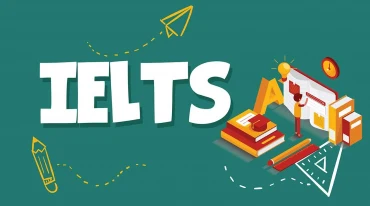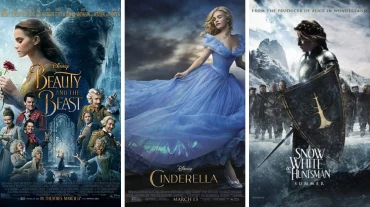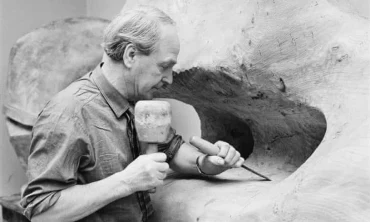
- 357 Lê Hồng Phong, P.2, Q.10, TP.HCM
- Hotline 1: 1900 7060
Hotline 2: (028) 3622 8849
Bài tập IELTS Reading - Cathy Freeman – Australian’s track queen
Cathy Freeman – Australian’s track queen

A Runner Cathy Freeman is the first Aborigine, the name given to indigenous Australians, ever to compete in the Olympics, and the first to wave the Aboriginal flag at a sporting event. Freeman lit the Olympic flame at the 2000 Olympics in Sydney, and won a gold medal in the 400 meters at those Games.
B Freeman’s grandmother was part of the “stolen generation” of Aboriginal people in Australia—from the early 20th century until the 1970s; many Aboriginal children were taken from their parents to be raised in state-run institutions. This practice was intended to remove the children from the poverty, disease, and addiction that plagued many aboriginal people, but it also resulted in tragically broken family ties and loss of ancient cultural traditions. Although Freeman was not taken from her family, she had a difficult childhood. Both her younger sister and her father died when she was young.
C When Freeman was still a girl; her talent in running was obvious. Her mother, Cecilia, encouraged her to pursue her interest in athletics, and when she was ten, her stepfather told her she could win a gold medal at the Olympics if she trained properly. However, although she had the talent, she was also a member of a minority group that historically had not had access to the same resources that other athletes had. Freeman was one of only a few Aborigines who won a scholarship to a boarding school where she could learn and train.
D At the age of 15, she competed at the National School Championships, and did well enough to be encouraged to try out for the 1990 Commonwealth Games team. She made the team as a sprinter, and was a member of the 4 X 100-meter relay team, which won gold at the Commonwealth Games. In 1990, she competed in the Australian National Championships, winning the 200 meters, and then ran in the 100, 200, and 4 X 100-meter races at the World Junior Games. During this time, she met Nick Bideau, an Australian track official who would later become her coach, manager, and boyfriend.
E In 1992, she competed in the 400-meter relay at the Barcelona Olympics, making it to the second qualifying round. She was also a member of the 4 X 100 meter team, which ran in the final but did not win a medal. At the World Junior Championships in 1992, she won a silver medal in the 200 meters. In 1993, she made it to the semifinals in the 200 meters in the World Championships.
F In 1994, Freeman won the 200 meters and the 400 meters at the Commonwealth Games in Victoria, British Columbia, Canada. After winning the 400 meters, Freeman ran her victory lap, carrying not the Australian national flag, but the red, black, and yellow Aboriginal flag. She was criticised in the press, and Australian team leader Arthur Tunstall told her she should not display the flag again. Freeman used the publicity she got to publicly discuss what the flag meant to Aboriginal people, explaining its symbolism: red for earth, yellow for sun, and black for skin. Defying Tunstall’s orders, she ran with the flag again after winning the 200 meters.
G At the 1996 Olympic games in Atlanta, Freeman won a silver medal in the 400 meters. After those Games, she broke off her romantic relationship with Bideau, although he continued as her manager. Freeman won the World Championships in the 400 meters in 1997 and 1998, even though she suffered a heel injury in 1998.
H In 1999, Freeman met Alexander Bodecker, an American executive for the Nike shoe company, and the two fell in love. As a result, her relationship with Bideau became strained, and she eventually fired him. Freeman and Bodecker were married on September 19, 1999, in San Francisco. Bideau subsequently claimed that she owed him over $2 million in assets from deals he negotiated while he represented her, leading to a long court battle.
I Freeman was, of course, Australia’s favourite to win a gold medal in the 400 meters at the 2000 Olympics, held in Sydney. Like any athlete, Freeman wanted to win in order to meet her own goals, but she also knew that she was viewed as a representative of the Aboriginal people, and she wanted to win for them. “I could feel the crowd all over me,” she told Mark Shimabukuro in the Sporting News. “I felt the emotion being absorbed into every part of my body.” When she won, with a time of 49.11 seconds, she was so relieved that she dropped to her knees on the track after completing the race.
J Freeman’s shoes were yellow, black, and red, traditional Aboriginal colours, but after she won, she took them off and ran her victory lap, in traditional Aboriginal style, carrying both the Australian and Aboriginal flags around the track as the crowd cheered. This time, instead of being criticised for carrying the Aboriginal flag around the track; she was widely celebrated by the Australian media and public.
Questions 1-9
The text has ten paragraphs labelled A–J.
Choose the correct heading for sections B–J from the list of headings below.
Write the correct number, i–xii, in boxes 1-9 on your answer sheet.
The first one is done for you as an example below.
Paragraph Headings
i An Australian sporting icon
ii A new love
iii Early competition
iv Winning isn’t everything
v Family support for running
vi Her first Olympics
vii Adored by her nation
viii Aboriginal identity on the track
ix Winning the top medal at home
x Second on the big stage
xi A difficult childhood
xii Losing in Sydney
e.g Paragraph 1 ___i___
1 Paragraph 2
2 Paragraph 3
3 Paragraph 4
4 Paragraph 5
5 Paragraph 6
6 Paragraph 7
7 Paragraph 8
8 Paragraph 9
9 Paragraph 10
Questions 10–14
Complete the notes below.
Choose NO MORE THAN TWO WORDS from the passage for each answer.
Write your answers in boxes 10-14 on your answer sheet.
How Cathy Freeman became a sports star
Although she had a hard upbringing she got support from her mother and 10………………..
She won a 11……………… at a young age to train and study which helped her develop as an athlete.
Her first international success was in 1990 at the 12……………….. as part of the Australian sprint team.
At her second Olympics in 1996 she won a silver medal for coming second in the 13…………………….
• In 2000, she finally won a 14………………….. at the Sydney Olympics making here one of the most loved sports star in Australia.
ANSWER KEY:
1. xi 2. v 3. iii
4. vi 5. viii 6. x
7. ii 8. ix 9. vii
10. Stepfather
11. Scholarship
12. Commonwealth games
13. 400 meters/ metres/ m
14. gold medal
THƯ VIỆN LIÊN QUAN

Reading là một trong bốn phần thi bắt buộc của bài thi IELTS, đây cũng được xem là phần thi thử thách nhất để chinh phục được band điểm cao. Hãy...

Bài viết cung cấp cho đọc giả Bài tập Reading part 3 - Chủ đề: Why fairy tales are really scary tales - Có đáp án

Bài viết cung cấp cho đọc giả Bài tập Reading part 2 - Chủ đề: The Desolenator: producing clean water - Có đáp án

Bài viết cung cấp cho đọc giả Bài tập Reading part 1 - Chủ đề: Henry Moore (1898-1986) - Có đáp án
Hoặc gọi ngay cho chúng tôi:
1900 7060
 | Chính sách bảo mật thông tin | Hình thức thanh toán | Quy định chung
| Chính sách bảo mật thông tin | Hình thức thanh toán | Quy định chung
Giấy chứng nhận đăng ký doanh nghiệp số 0310635296 do Sở Kế hoạch và Đầu tư TPHCM cấp.
Giấy Phép hoạt động trung tâm ngoại ngữ số 3068/QĐ-GDĐT-TC do Sở Giáo Dục và Đào Tạo TPHCM cấp